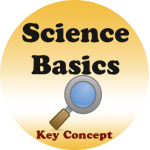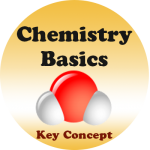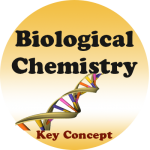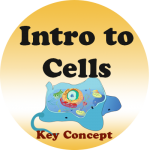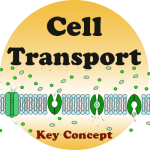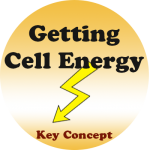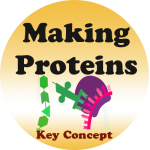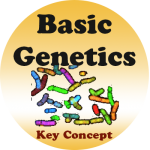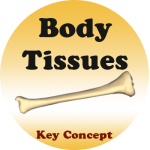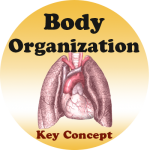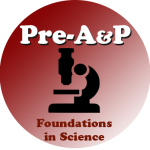BadgesPre-A&P
What are badges and why should I care?
Pre-A&P Foundations in Science (BIO 095) is a course that allows you to earn digital microcredentials called badges. Badges are an emerging phenomenon in education and professional training that demonstrates proficiency in specific concepts and skills. Badges can be collected for self-motivation and can be shared to show others your accomplishments.

Please explore the rest of this page to learn more about these badges.
FAQs
🙋 I’m confused about the badges. Is that part of the class assignments and do we have to complete that?
The badges are merely markers that you’ve reached a certain “level” within the course—much like one can earn badges or coins or whatever in a video game to show that you’ve reached a certain level of skill or achievement. So you can brag that you’ve earned the “cell biology badge” to your friends. Because we all want to be able to do that, right?
Badges are meant as both a sign that you’ve achieved something as well as a bit of motivation to keep going and earn more.
Badges are assigned automatically as a result of passing a module. There’s nothing extra you have to do. Except maybe go look at your badge and bask in its glow. But only if you WANT to. And if you happen to collect such badges, you can add them to a digital backpack and show them off outside the course—if you want to.
🙋 Where can I find specific criteria for Pre-A&P badges?
Just keep scrolling down to find the criteria listing, click this link: Badge List with Criteria
🙋Where do I find my badges in the Pre-A&P course?
Click Badges in the left Course Navigation Menu. If the menu is not visible, click the Course Navigation Menu button at the top:
The Badgr Progress Chart shows your progress in earning badges as an individual learner.
Another way to see your badges is to click the Badge link with in each module on the course Home page or Module page:
🙋How do I download or share my badges in a badge backpack or on social media?
Your badges from Pre-A&P are automatically added to your Canvas Badges (Badgr) Open Badges Backpack if you linked it to your account at Badgr
Open the Badges course menu link (described above) to download your badges to add to social media or to any non-Badgr Open Badges backpack such as Open Badge Passport.
🙋 What is a “leaderboard”?
Canvas Badges (Badgr)’s course Leaderboard is a privacy-aware method of allowing students to track each other’s progress through a Canvas course learning pathway – adding an element of gamification to your learning. The leaderboard scrolls and paginates through the full list of students and course modules.
Research by learning scientists show that this type of friendly competition helps keep our motivation high and can even promote collaboration among students in the course.
Badgr automatically generates silly nicknames instead of using your real name, to protect your privacy. If you want to switch to allowing other students in the course to see your real name, you can opt to do that.
🙋 Where do I find the privacy policy for the badging system?
Go to the Canvas Badges (Badgr) privacy policy page.
🙋 How do I get more help with badges?
Canvas Badges (Badgr) Support (lots of questions answered here!)
Pre-A&P Badges
Module 1 Badge | Science Basics
To earn this badge, learners must complete Module 1, scoring a B or better (85%) on the module test.
This badge demonstrates proficiency in these learning objectives:
Describe scientific methodology used in human sciences
- demonstrate competent use of scientific terminology
- demonstrate a working knowledge of metric (SI) units of measurement
- describe the scientific method, including development of theories
- interpret scientific graphs, tables, diagrams, and charts
- define life from a biological perspective
- describe the main levels of biological organization
Estimated time for study, review, assessments: 1.5—4 hours
Module 2 Badge | Introduction to Chemistry
To earn this badge, learners must complete Module 2, scoring a B or better (85%) on the module test.
This badge demonstrates proficiency inthese learning objectives:
Apply basic concepts of chemistry in human sciences
- describe the essential structural components of matter
- distinguish the main types of attractions among atoms
- describe the chemical properties of water in the body
- define pH; use the pH scale; define acid, base, neutral, and buffer in terms of pH
Estimated time for study, review, assessments: 1.5—4 hours
Module 3 Badge | Biological Chemistry
To earn this badge, learners must complete Module 3, scoring a B or better (85%) on the module test.
This badge demonstrates proficiency in these learning objectives:
Demonstrate familiarity with biologically important macromolecules
- describe polymerization and define monomer
- list categories and examples of carbohydrates, lipids, proteins, nucleic acids (and related molecules)
- give examples of hybrid molecules
- list important functions of each major type of macromolecule in the human body
Estimated time for study, review, assessments: 1.5—4 hours
Module 4 Badge | Introduction to Cell Biology
To earn this badge, learners must complete Module 4, scoring a B or better (85%) on the module test.
This badge demonstrates proficiency in these learning objectives:
Describe the basic structure and function of human cells
- describe the generalized human cell, including cytoplasm, nucleus, membranes, and organelles
- list important organelles found in human cells, describing the basic structure and function of each
- list and describe major types of cell junctions
- describe the extracellular matrix and list its main functions
- describe the life cycle of the cell, including major phases of interphase, mitosis, and cytokinesis
Estimated time for study, review, assessments: 1.5—4 hours
Module 5 Badge | Cell Transport
To earn this badge, learners must complete Module 5, scoring a B or better (85%) on the module test.
This badge demonstrates proficiency in these learning objectives:
Describe how substances are transported across cell membranes
- distinguish between active and passive forms of transport
- define key terms related to solutions (e.g., solvent, solute) and diffusion (e.g., permeant, permeable)
- describe simple and facilitated diffusion
- distinguish between mechanisms of channel-mediated diffusion and carrier-mediated diffusion
- describe osmosis and osmotic pressure and their effects on human cells
- distinguish between cotransport (symport) and countertransport (antiport)
- describe mechanisms of vesicle-mediated transport
Estimated time for study, review, assessments: 1.5—4 hours
Module 6 Badge | Getting Energy
To earn this badge, learners must complete Module 6, scoring a B or better (85%) on the module test.
This badge demonstrates proficiency in these learning objectives:
Describe how cells get energy
- describe the structure of ATP and its role in the cell energy cycle (ATP cycle)
- define metabolism and contrast catabolism with anabolism
- describe the basic structure of the cell’s metabolic pathway for transfering energy from nutrients, distinguishing between aerobic and anaerobic pathways
- describe the role of enzymes in metabolic pathways
- describe glycolysis
- describe the citric acid cycle
- define the role of the electron transport system
- describe the overall energy budget when transferring energy from glucose to ATP
Estimated time for study, review, assessments: 1.5—4 hours
Module 7 Badge | Making Proteins
To earn this badge, learners must complete Module 7, scoring a B or better (85%) on the module test.
This badge demonstrates proficiency in these learning objectives:
Describe how cells use the genetic code to make proteins
- describe how information is encoded in the structure of DNA and RNA
- describe transcription and editing of a protein-coding gene
- outline the process of translating a gene transcript to produce a protein
- describe the signifcance of genetic mutations in protein synthesis
- describe the basic mechanisms for regulating gene expression
- identify the locations of DNA in a human cell and of the main steps of protein synthesis
Estimated time for study, review, assessments: 1.5—4 hours
Module 8 Badge | Introduction to Human Genetics
To earn this badge, learners must complete Module 8, scoring a B or better (85%) on the module test.
This badge demonstrates proficiency in these learning objectives:
Define and apply basic principles of human inheritance
- define genetics and genomics in terms of biological inheritance
- describe meiosis and contrast it with mitosis
- define what a gamete is and tell why it must be haploid
- identify Mendel’s role in the history of genetics
- define key terms of genetics: gene, trait, allele, homozygous, heterozygous, dominant, codominant, recessive, genotype, phenotype, carrier, mutation, deletion, duplication
- define the Law of Segregation
- define the Law of Independent Assortment
- describe hybridization, including monohybrid and dihybrid crosses
- interpret Punnett squares and pedigrees
- describe the concept of sex-linked traits
- distinguish btween nuclear and mitochondrial inheritance
- describe chromosomal and point mutations and their role in inheritance
- describe how traits can be inherited by epigenetic mechanisms
Estimated time for study, review, assessments: 1.5—4 hours
Module 9 Badge | Introduction to Tissues
To earn this badge, learners must complete Module 9, scoring a B or better (85%) on the module test.
This badge demonstrates proficiency in these learning objectives:
Describe the structure and function of the four basic tissue types in the body
- describe the structure and function of the extracellular matrix
- describe how epithelial tissues are classified by layers and cell shape
- explain how cellular junctions (desmosomes, gap junctions, tight junctions) play a role in epithelial structure
- distinguish between the apical and basal surfaces of epithelial cells
- list major functions of epithelial tissues in the body
- describe the general structure and function of connective tissues as a group
- compare and contrast elastic fibers and collagenous fivers
- identify the major types of connective tissue and give distinguish them by structural characteristics
- list and describe the three main types of muscle in the body, distinguishing them by structure and location
- define syncytium and describe its functional importance in the heart
- describe the two main types of cells in nervous tissue
- define synapse
Estimated time for study, review, assessments: 1.5—4 hours
Module 10 Badge | Human Body Structure
To earn this badge, learners must complete Module 10, scoring a B or better (85%) on the module test.
This badge demonstrates proficiency in these learning objectives:
Describe the basic body plan of the human organism
- tell why anatomical terminology is more accurate than plain English for describing human body structure
- describe the anatomical position in human anatomy
- use correct anatomical terminology to describe direction in the body
- identify the major types of anatomical planes in the body
- describe how organs are grouped into systems for biological study
- identify the functions and major organs of each of the eleven major organ systems of the human body
Estimated time for study, review, assessments: 1.5—4 hours
Course Completion Badge
Pre-A&P Foundations in Science
To earn this badge, learners must complete ten cumulative review modules, scoring a B or better (85%) on the comprehensive final exam.
This badge demonstrates proficiency in these learning objectives (details listed above):
- describe scientific methodology used in human sciences
- apply basic concepts of chemistry to human sciences
- demonstrate familiarity with biologically important macromolecules
- describe the basic structure and function of human cells
- describe how substances are transported across cell membranes
- describe how cells get energy
- describe how cells use the genetic code to make proteins
- define and apply basic principles of human inheritance
- describe the structure and function of the four basic tissue types in the body
- describe the basic body plan of the human organism
- work independently in a self-paced online course and succeed in taking online tests and exams
Estimated time for study, review, assessments: 15—40 hours
SCC students:
BIO 095 is an acceptable prerequisite course
for BIO 250 (A&P 1)
Last updated: January 12, 2023 at 16:29 pm


